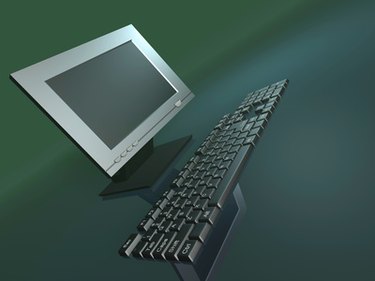
Like any other machine, computers require maintenance to sustain proper performance. Over time, your computer may begin to run more slowly and take longer times to display Web pages. These issues are often symptoms of malware or virus activity on a computer. They can also signify incompatibilities with browser plug-ins and settings.
Basic Maintenance
Video of the Day
Step 1
Update your virus and spyware scanner and run a scan on your computer. Viruses often cause a computer to run more slowly and can affect the speed of Web page browsing.
Video of the Day
Step 2
Clean out your browser's temporary files and cache. When temporary files build up on a computer, this can result in sluggish computer response.
Step 3
Uninstall any programs that you don't need on your computer, especially toolbars and Internet-based applications.
Step 4
Use a registry cleaning program to detect and fix errors in your computer's registry.
Uninstalling Firefox Add-Ons
Step 1
Launch your Firefox browser.
Step 2
Select "Add-ons" from the "Tools" menu. A list of add-ons currently installed on your browser is displayed. While add-ons usually enhance Firefox, some may cause your computer to bog down instead.
Step 3
Click the "Disable" button to disable the add-on without uninstalling. This enables you to test which add-on might be causing issues.
Step 4
Click the "Uninstall" button to completely remove unneeded add-ons.
Step 5
Restart your browser to allow the changes to take place.
Disable Internet Explorer Add-Ons
Step 1
Launch your Internet Explorer browser.
Step 2
Select "Manage Add-ons" from the "Tools" menu.
Step 3
Select "Toolbars and Extensions" under the "Add-on Types" header.
Step 4
Select "All add-ons" from the "Show" drop-down menu to show a list of all Internet Explorer add-ons.
Step 5
Click on the name of the add-on, then click the "Disable" button.
Step 6
Disable all add-ons that you don't need, then click the "Close" button.
Step 7
Restart your Internet Explorer browser to allow changes to take place.
Run the Disk Cleanup Tool
Step 1
Navigate to the "Start" button and select "Programs."
Step 2
Click the "Accessories" folder, then select "System Tools."
Step 3
Double-click the "Disk Cleanup" tool.
Step 4
Select your computer's main hard drive from the drop-down menu, then click "OK." The Disk Cleanup tool analyzes your computer for unnecessary and temporary files. After it has completed analyzing your computer, you will see a list of file types that can be deleted from your computer.
Step 5
Check the box next to each file type you would like to delete, then press the "OK" button to allow the tool to clean your hard drive.